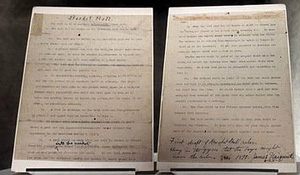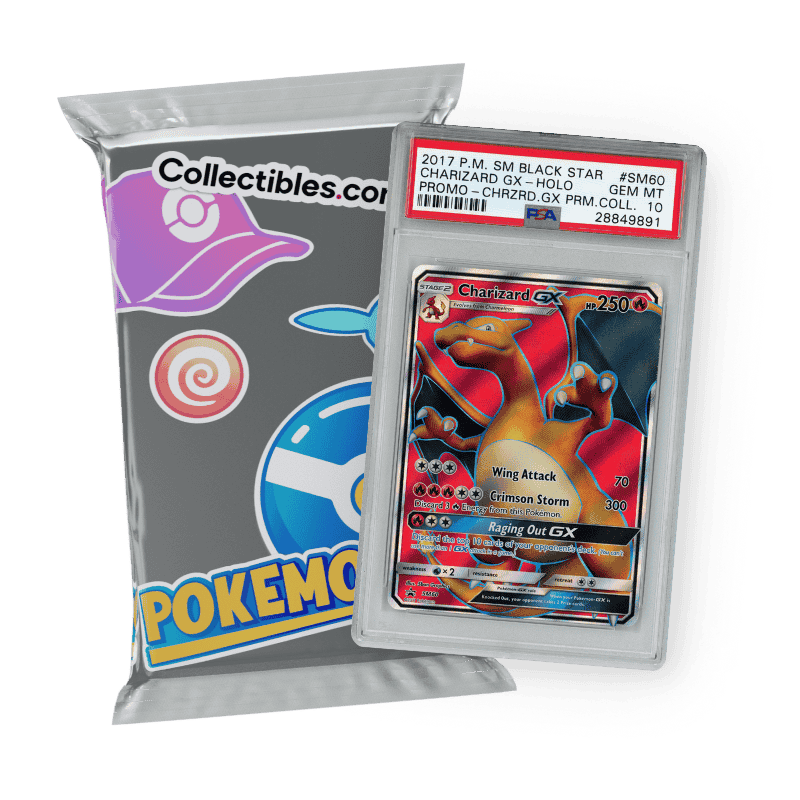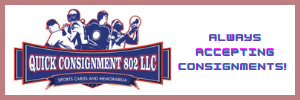
James Naismith’s Thirteen Rules of Basketball Sells For $4.3 Million
 The most important document in basketball history recently sold for over $4 million dollars in auction, in the process becoming the most prolific sale in the history of sports memorabilia. The document of note is the 119 year old "rules of basketball" written by the game's inventor James Naismith.
The most important document in basketball history recently sold for over $4 million dollars in auction, in the process becoming the most prolific sale in the history of sports memorabilia. The document of note is the 119 year old "rules of basketball" written by the game's inventor James Naismith.
The legendary document was written by Dr. James Naismith during the Winter of 1891 in order to create a winter sport for boys to play at a local YMCA. Naismith wrote the 13 rules during his time as a physical education instructor at the Christian association, where his boss gave him two weeks to come up with a new indoor activity for his gym class, he wrote all 13 rules the night before that deadline. He then gave the list to his secretary, who typed them onto two pages that Naismith pinned on a bulletin board outside the gym.
On friday basketball's version of the declaration of independence sold for $4.3 million dollars, which made Naismith's yellowish pieces of hoops history the highest selling article of sports memorabilia in history, topping Mark McGwire's 70th home run ball from 1998 by $1.3 million dollars.
"Basketball is a pure invention," said Selby Kiffer, a senior specialist in American history documents at Sotheby's Auction House, which was where the rules were sold on behalf of the Naismith International Basketball Foundation.
"It's really the genesis, the birth certificate of one of the world's most popular sports," he said in October when the sale was announced. "It's a sport that has had an impact on everything from fashion, such as sneakers, to culture that in a way transcends sports.
The sale price of $4.3 million includes a buyer's premium. The proceeds are to benefit the Naismith foundation, which promotes sportsmanship and provides services to underprivileged children around the world. It was purchased by David and Suzanne Booth, who hope to bring the rules to the University of Kansas, where in 1898 Dr. Naismith became the Jayhawks first ever basketball coach.
Ian Naismith, the foundation's founder and grandson of James Naismith, told The Associated Press in an interview in October that it was a family decision to put the rules on the auction block and give the money to the Naismith charity.
"It's what Dr. Naismith wanted," he said.
James Naismith died in 1939, three years after Basketball became an official sport at the 1936 Summer Olympics in Berlin. Below are all 13 rules that appear on Naismith's "Rules of Basketball".
- The ball may be thrown in any direction with one or both hands.
- The ball may be batted in any direction with one or both hands, but never with the fist.
- A player cannot run with the ball. The player must throw it from the spot on which he catches it, allowance to be made for a man running at good speed.
- The ball must be held by the hands. The arms or body must not be used for holding it.
- No shouldering, holding, pushing, striking or tripping in any way of an opponent. The first infringement of this rule by any person shall count as a foul; the second shall disqualify him until the next goal is made or, if there was evident intent to injure the person, for the whole of the game. No substitution shall be allowed.
- A foul is striking at the ball with the fist, violations of Rules 3 and 4 and such as described in Rule 5.
- If either side makes three consecutive fouls it shall count as a goal for the opponents (consecutive means without the opponents in the meantime making a foul).
- A goal shall be made when the ball is thrown or batted from the grounds into the basket and stays there, providing those defending the goal do no touch or disturb the goal. If the ball rests on the edges, and the opponent moves the basket, it shall count as a goal.
- When the ball goes out of bounds, it shall be thrown into the field and played by the first person touching it. In case of dispute the umpire shall throw it straight into the field. The thrower-in is allowed five seconds. If he holds it longer, it shall go to the opponent. If any side persists in delaying the game, the umpire shall call a foul on them.
- The umpire shall be the judge of the men and shall note the fouls and notify the referee when three consecutive fouls have been made. He shall have power to disqualify men according to Rule 5.
- The referee shall be judge of the ball and shall decide when the ball is in play, in bounds, to which side it belongs, and shall keep the time. He shall decide when a goal has been made and keep account of the goals, with any other duties that are usually performed by a referee.
- The time shall be two fifteen-minute halves, with five minutes rest between.
- The side making the most goals in that time shall be declared the winner.
 | Making purchases through affiliate links can earn the site a commission |



























Caleb
Wow that is cool. Thanks for putting the rules on there. I was really hoping to get to read them when I saw the title of the article.
He forgot to mention that you shouldn’t go into the stands and throw punches at the fans!
Brett J. Lewis
@Caleb: Maybe it’s high time to ammend Dr. Naismith’s 13 rules and expand it 200-500.
Brett J. Lewis
@Caleb: Back in the 1890’s that probably passed as common sense, these days on otherhand you have to clearly explain the reasons why one shouldn’t start a massive brawl with fans.